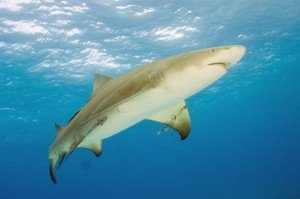I Am Ghostie Grimsoul, But Please Just Refer To Me As Ghostie
i am ghostie grimsoul, but please just refer to me as ghostie

please refer to me using she/her or they/them pronouns more information about me and this blog underneath
i am a cassmate, which makes me apathetic by nature, and apart of the vivid rainbow system, with our host being limon who is primarily active at limoncats i am a fictive from an obscure source; prism the colorful tales my source was made by kiraprismart

i am interested in fish (ichthyology) and marine biology but i am still learning about things; please tell me things you know about the subjects in my ask box as i am willing to read

to sort and filter tags, please refer to these tags: #necronotemicon entry is my normal text post tag #addition to the pages is my reblog tag #artwork is my art tag (if the art was made by me) #curses is my vent tag #contributions is my ask tag



More Posts from Offishialghostieaccount and Others
How about the Port Jackson and its adorable smile! I think more people should know about it!
Love your blog! 🦈💖
Thank you so much!
Port Jackson Shark // Heterodontus portusjacksoni

These cute sharks grow to be approximately 1.65 m (5.4 ft) and are found exclusively in the waters of southern Australia. The conservation status for these sharks is unknown, but their eggs have a high mortality rate (only about 11-22% survive) because of high predation.

Unlike a lot of sharks, the Port Jackson shark doesn't have a mouthful of sharp, pointy teeth. They have a front row of small, pointed teeth that lead to wide, flat teeth in the back. These teeth are handy for catching and then breaking the shells of mollusks and crustaceans.

I'd love some lemon shark facts 💛


Lemon Shark or Negaprion brevirostris
They get their name from their yellowish brown coloring. Lemon sharks, unlike the lone-shark stereotype, enjoy hanging out in groups! They even have preferred individuals to hang out with!

Lemon sharks are also one of the most well-understood shark species and this is because they do well in captivity. Additionally, most of our knowledge of shark physiology and biology stems from studies of lemon sharks!
Unfortunately, this species is nearly threatened; this is mostly due to overfishing. They're not only caught as bycatch, but are a target for some fisheries. Their meat, skin, and squalene are used for human consumption. It's estimated that between 70-90% of shark squalene harvested each year is used in cosmetics. (Make sure to do your research before buying makeup). To harvest the amount of squalene used for our consumption, almost 3 million sharks are killed every year. But there's a great new alternative source that's gaining traction: olives!
'fairies dont exist' WRONG❗❗cyerce elegans




hi
what's this one cause I have questions

1; is it edible
2: fun facts about it
THAMK YOU
That is a flying gurnard (Dactylopterus volitans)!

To answer your first question, they are edible! They're steadily becoming a more popular food choice because they have a relatively low oil content.


The first thing you might notice about this species is their very large pectoral fins. It's believed that their primary use is to scare off predators. Often the fish rest on the seafloor with the large fins tucked in, only displaying them when threatened. Additionally, they have finger-like segments of their pectoral fins which they use to walk across the sea floor.
These fish can also make noises! Using their swim bladder and jaw, they can make a grunt-like sound believed be used to scare off predators or communicate with each other.
"were going to sleep in ten minutes" no

The shape of a fish's caudal tail can tell you a lot about how fast the fish moves! A rounded tail is the slowest and a lunate tail is the fastest! The lunate tail has the most optimal ratio of high thrust and low draw, making it the fastest.
Ichthyology Notes 2/?
The body shape of a fish can tell you a lot about it! It can tell you where they like to hang out, how they hunt, what they eat, and more!
Let's use the Asian Arowana (Scleropages formosus) as an example!

Based off the rounded caudal fin (the "tail"), this fish is not a very fast swimmer
Having the dorsal fin and anal fin right near the end of the fish's body suggests it is an ambush predator
The flat head suggests it hunts at the surface
The upturned, large mouth suggests it catches its prey from below
Arowana are ambush predators that hunt at the surface!
They don't need to go very far very fast, hence the rounded caudal fin (which is the slowest moving fin)
Having posterior dorsal and anal fins are a common trait amongst ambush predator
They primarily hunt at the surface! They will sit near the surface and grab small fish, bugs, crustaceans, and even occasionally a bird!
4. Fish that catch their prey from below sometimes do it via suction. They'll open their large mouth, and as the water gets sucked in, so does anything in the water. And the larger the mouth, more water will more quickly fill into the mouth, catching larger and faster prey

she/they18 internally - bodily a minorprofile picture by kiraprismartbanner by fanny-hs
21 posts



